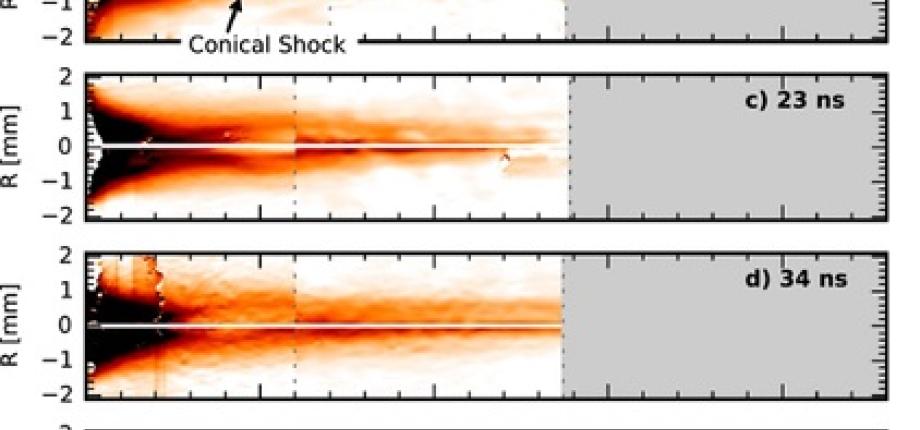Magnetized plasma

Magnetic fields, present in the interstellar medium and in fusion experiments, modify the properties of high energy density plasmas. Thanks to a magnetic field generator coupled to the laser facility, LULI is at the forefront of research on magnetized plasmas.
The physics of magnetized plasmas of high energy density is of fundamental importance in processes such as Inertial Confinement Fusion (ICF), in laboratory astrophysics or in the development of efficient secondary sources. Indeed, the magnetic field can strongly modify the dynamics of a plasma, from a macroscopic point of view, by the addition of a magnetic pressure, and from a microscopic point of view, by a gyration movement of the charged particles along the field lines.

What we have achieved at LULI :
Thanks to the development of a unique platform allowing to strongly influence the dynamics of a hot laser-generated plasma via a strong magnetic field [Rev. Sci. Inst. 84, 043505 (2013)], LULI has been able to demonstrate in the laboratory the relevance of a number of phenomena evoked theoretically in astrophysics. In particular: (1) the spectacular collimation exhibited by some ejecta of young stars [Science 346, 325 (2014); Phys. Rev. Lett. 119, 255002 (2017)], (2) the shrouding of the X-ray emission of plasmas accreting, from its disk, matter onto a young star [Science Advances 3, no. 11, e1700982 (2017)], and (3) the acceleration of charged particles, precursors of cosmic rays, in magnetized shock structures [Nature Physics 17, 1177 (2021)]. This platform is also relevant in the context of ICF, since it allowed the first demonstration of an important hydrodynamic instability, the Rayleigh-Taylor instability in magnetized plasma [Phys. Rev. Lett. 123, 205001 (2019)].
Contacts :
bruno.albertazzi[at]polytechnique.edu
julien.fuchs[at]polytechnique.edu




